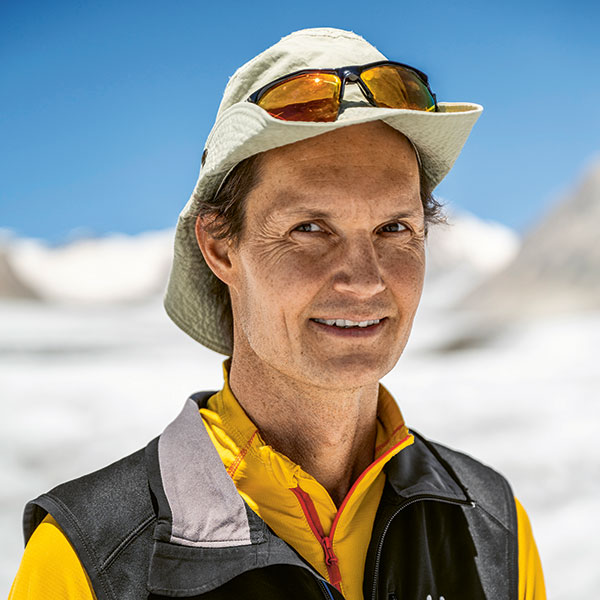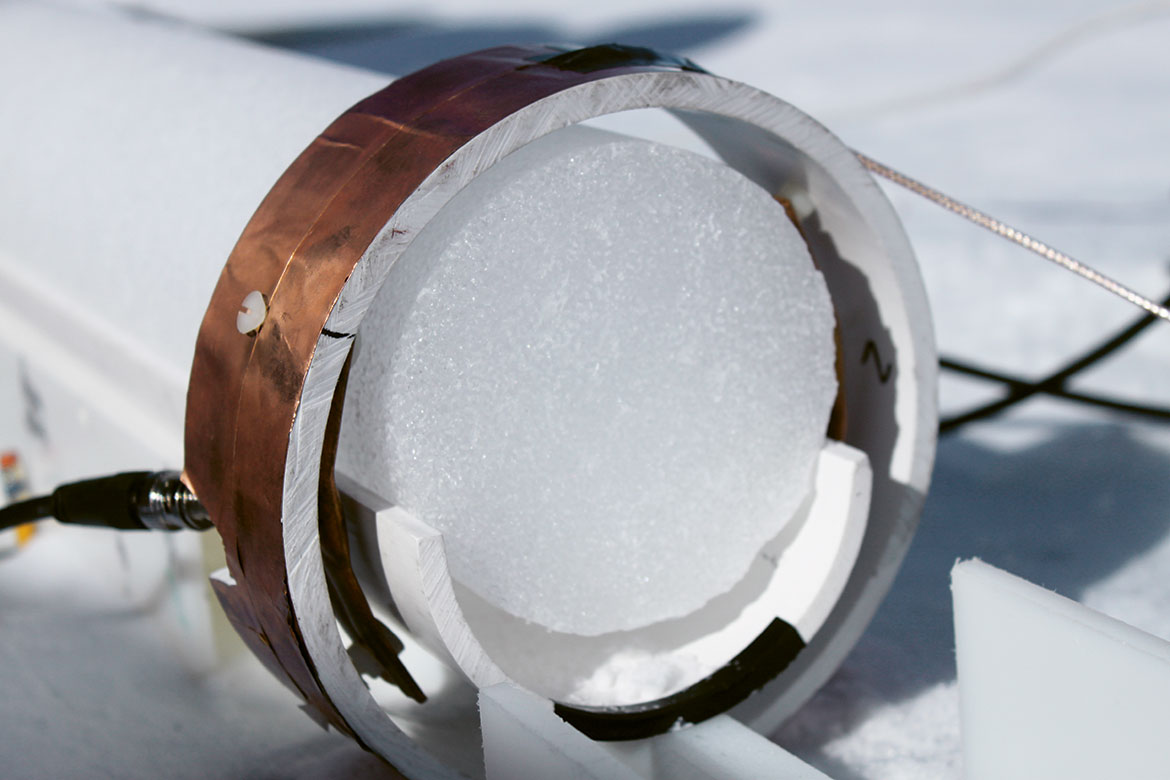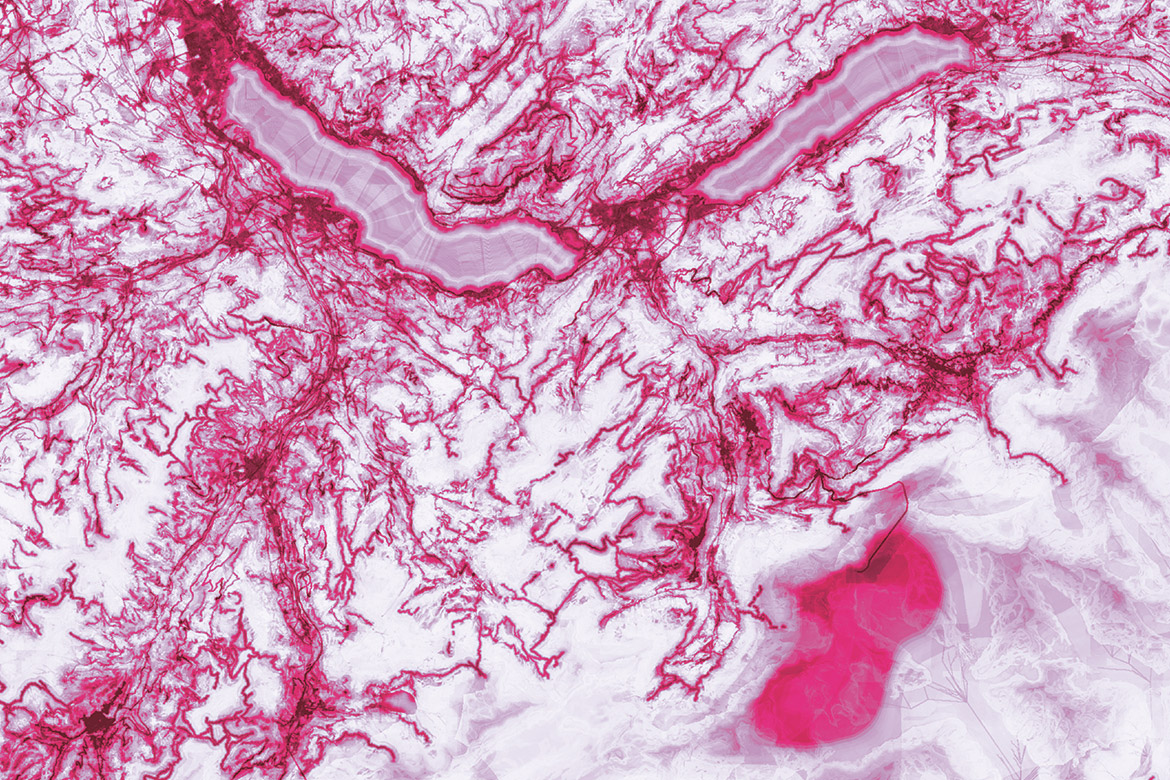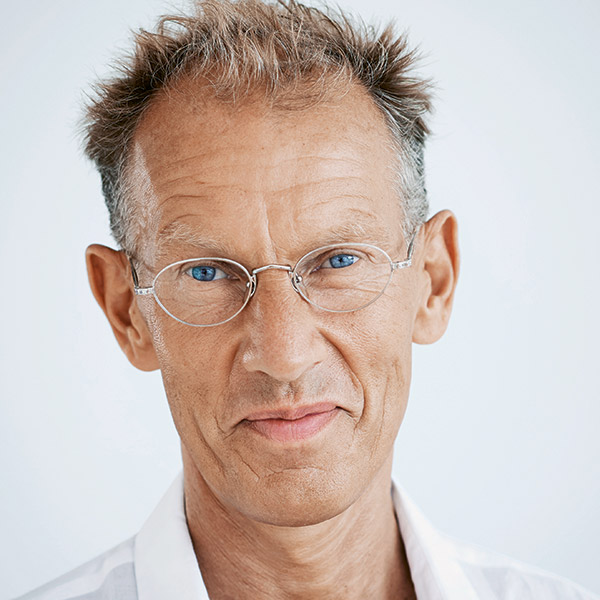Glacier slice
Photographed in analogue, the wall of a glacier bears witness to the inner life of these giant ice masses that shape the Swiss landscape.

‘Glacier Fabric’ by Matthias Vollmer. NB: this photograph has been rotated 90 degrees clockwise.
Matthias Vollmer is an architect, but he enjoys mountain walks that take in the glaciers. He’s accompanied by students from the Institute of Landscape Architecture at ETH Zurich. “We analyse how landscapes are represented and how people perceive them. Glaciers play a special role in Switzerland: not only have they channelled its hills and valleys, but they’ve also infiltrated the national imagination. Our relationship with them is variable and ambivalent: in the space of a few centuries we’ve moved from seeing them as a natural danger, to wanting to preserve them today as part of the Swiss landscape”.
The photo here shows a half-metre section of the lower wall of the Morteratsch glacier near Pontresina, Grisons. There are numerous air bubbles and slanting cracks created by the forces at play in the ice mass. It’s this complexity that interests Vollmer: “Glaciers are always thought of as being gigantic, but they can of course be considered on a range of scales. When we get up close, we discover a very rich structure, witness an inner life, and come to terms with a perpetual movement. This paradox reveals itself clearly when we stand next to them. Nothing seems to move, yet there’s a plethora of evidence left by a glacier’s advances and retreats, such as the sections of ice, the rocks and pebbles”.
For his photos, Vollmer waits until the sun’s rays are no longer striking the wall directly and uses a polarising filter to block out reflections. His shots are analogue, and captured on 4x5 inch photographic plates. “Analogue photography forces us to think long and hard about the shot before taking it – unlike digital cameras that let us snap away ad infinitum”.
“This photo is as much a scientific document as it is an artistic one. No sooner than having chosen the medium to use, I start to make a range of decisions: how to stage the subject, which settings to use and what interpretations may arise from the chosen representation. For me, this is a way of defining art: it’s not necessarily a beautiful artefact, but the shaping of our own internal reflections. And yes, I do also find this picture quite beautiful!”.




